Discover 11 hidden attractions, cool sights, and unusual things to do in Hanover (United States). Don't miss out on these must-see attractions: College Green, Dartmouth College, and Hopkins Center for the Arts. Also, be sure to include Hood Museum of Art in your itinerary.
Below, you can find the list of the most amazing places you should visit in Hanover (New Hampshire).
Table of Contents
College Green

Park in Hanover, New Hampshire. The Green is a grass-covered field and common space at the center of Dartmouth College, an Ivy League university located in Hanover, New Hampshire, United States. It was among the first parcels of land obtained by the College upon its founding in 1769, and is the only creation of the 18th century remaining at the center of the campus. After being cleared of pine trees, it initially served as a pasture and later as an athletic field for College sporting events. Today, it is a central location for rallies, celebrations, and demonstrations, and serves as a general, all-purpose recreation area. The College describes the Green as "historic" and as the "emotional center" of the institution.[1]
Dartmouth College
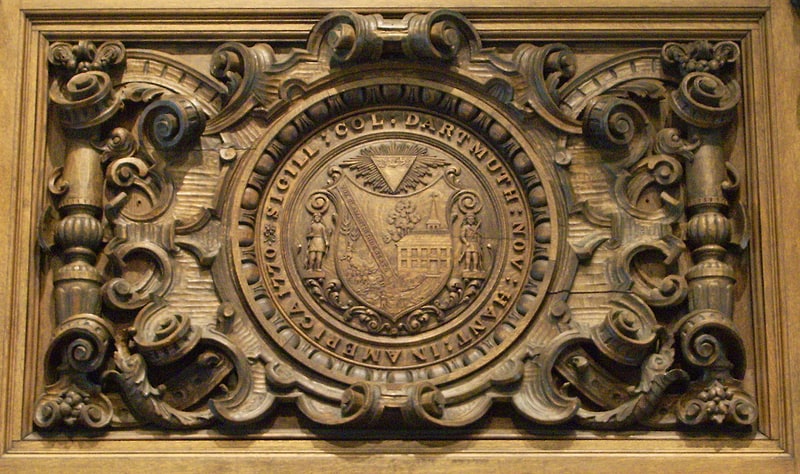
Private university in Hanover, New Hampshire. Dartmouth College is a private Ivy League research university in Hanover, New Hampshire, United States. Established in 1769 by Eleazar Wheelock, it is the ninth-oldest institution of higher education in the United States and one of the nine colonial colleges chartered before the American Revolution. Although founded to educate Native Americans in Christian theology and the English way of life, Dartmouth primarily trained Congregationalist ministers during its early history before it gradually secularized, emerging at the turn of the 20th century from relative obscurity into national prominence.
Following a liberal arts curriculum, the university provides undergraduate instruction in 40 academic departments and interdisciplinary programs, including 60 majors in the humanities, social sciences, natural sciences, and engineering, and enables students to design specialized concentrations or engage in dual degree programs. In addition to the undergraduate faculty of arts and sciences, Dartmouth has four professional and graduate schools: the Geisel School of Medicine, the Thayer School of Engineering, the Tuck School of Business, and the Guarini School of Graduate and Advanced Studies. The university also has affiliations with the Dartmouth–Hitchcock Medical Center. Dartmouth is home to the Rockefeller Center for Public Policy and the Social Sciences, the Hood Museum of Art, the John Sloan Dickey Center for International Understanding, and the Hopkins Center for the Arts. With a student enrollment of about 6,700, Dartmouth is the smallest university in the Ivy League. Undergraduate admissions are highly selective with an acceptance rate of 6.24% for the class of 2026, including a 4.7% rate for regular decision applicants.
Situated on a terrace above the Connecticut River, Dartmouth's 269-acre (109 ha) main campus is in the rural Upper Valley region of New England. The university functions on a quarter system, operating year-round on four ten-week academic terms. Dartmouth is known for its strong undergraduate focus, Greek culture, and wide array of enduring campus traditions. Its 34 varsity sports teams compete intercollegiately in the Ivy League conference of the NCAA Division I.
Dartmouth is consistently cited as a leading university for undergraduate teaching by U.S. News & World Report. In 2021, the Carnegie Classification of Institutions of Higher Education listed Dartmouth as the only majority-undergraduate, arts-and-sciences focused, doctoral university in the country that has "some graduate coexistence" and "very high research activity".
The university has many prominent alumni, including 170 members of the U.S. Senate and the U.S. House of Representatives, 24 U.S. governors, 10 billionaire alumni, 8 U.S. Cabinet secretaries, 3 Nobel Prize laureates, 2 U.S. Supreme Court justices, and a U.S. vice president. Other notable alumni include 79 Rhodes Scholars, 26 Marshall Scholarship recipients, and 14 Pulitzer Prize winners. Dartmouth alumni also include many CEOs and founders of Fortune 500 corporations, high-ranking U.S. diplomats, academic scholars, literary and media figures, professional athletes, and Olympic medalists.[2]
Address: 6016 McNutt Hall, Hanover (Hanover)
Hopkins Center for the Arts
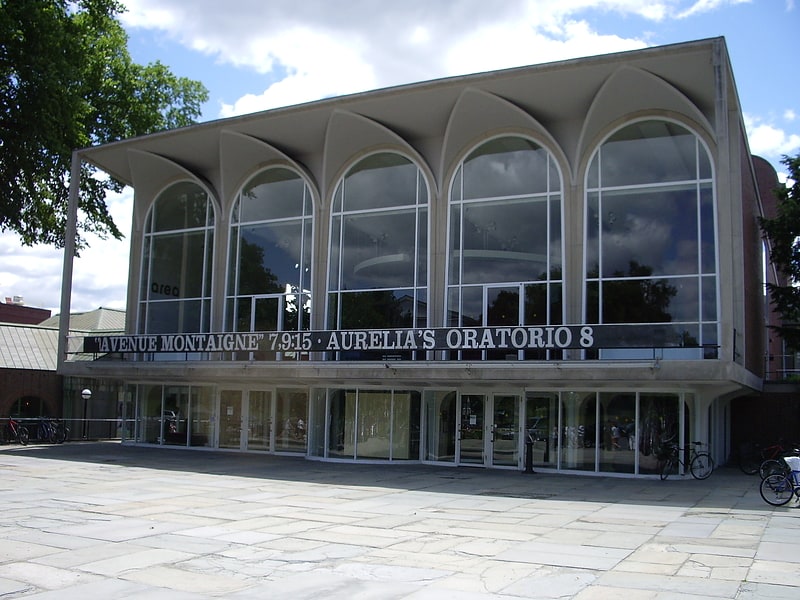
Performing arts theater in Hanover, New Hampshire. Hopkins Center for the Arts at Dartmouth College is located at 4 East Wheelock Street in Hanover, New Hampshire. The center, which was designed by Wallace Harrison and foreshadows his later design of Manhattan's Lincoln Center, is the college's cultural hub. It is home to the drama and music departments. In addition to these fields, the Hopkins Center, or the "Hop" as it is called by students, has a woodshop and jewelry studio which are open for use by students and the public.[3]
Address: 4 Wheelock St, 03755-8002 Hanover (Hanover)
Hood Museum of Art

Museum in Hanover, New Hampshire. The Hood Museum of Art is owned and operated by Dartmouth College, located in Hanover, New Hampshire, in the United States. The first reference to the development of an art collection at Dartmouth dates to 1772, making the collection among the oldest and largest, at about 65,000 objects, of any college or university museum in the United States. The Hood Museum of Art officially opened in the fall of 1985. The original building was designed by Charles Willard Moore and Chad Floyd. In March 2016, the museum closed for a major expansion and renovation designed by Tod Williams Billie Tsien Architects. The museum reopened to the public on January 26, 2019, with more gallery and office spaces as well as a welcoming new atrium. It also added the Bernstein Center for Object Study, which houses three smart object-study rooms, an object-staging room, and curatorial and security offices, all accessible to Dartmouth faculty and students via an entrance set parallel to the doors to the galleries themselves.
As a teaching museum, the Hood Museum of Art's mission is to "enable and cultivate transformative encounters with works of artistic and cultural significance to advance critical thinking and enrich people's lives." It offers support to the Dartmouth curriculum across many disciplines and majors while encouraging co-curricular engagement through workshops such as Museum Collecting 101 and the undergraduate-driven Museum Club. The museum is free and open to all.
The Hood Museum's collection is drawn from a wide range of cultures and historical periods. The 65,000 objects in the museum's care represent the diverse artistic traditions of six continents, including, broadly, Native American, European and American, Asian, Indigenous Australian, African, and Melanesian art. The museum hosts both collection-driven and loan-based traveling exhibitions.
Among the museum's most important holdings are six Assyrian stone reliefs from the palace of Ashurnasirpal II (about 900 BCE), the complete archive of photojournalist James Nachtwey, and the fresco by José Clemente Orozco titled The Epic of American Civilization (1932–34), which was designated a National Historic Landmark in 2013, located nearby in Dartmouth's Baker-Berry Library.[4]
Address: 6 E Wheelock St, 03755 Hanover (Hanover)
Shattuck Observatory
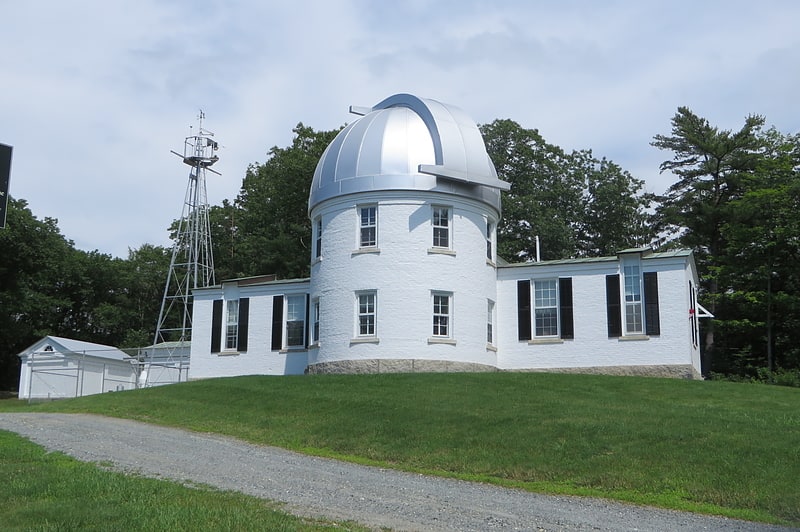
Observatory in Hanover, New Hampshire. Shattuck Observatory is an astronomical observatory owned and operated by Dartmouth College in Hanover, New Hampshire, United States.
The observatory's most notable director was Edwin Brant Frost, who went on to be the director of the Yerkes Observatory. Today, it is primarily used for instructional purposes, but is open for public observation of the stars on Friday evenings. For scientific work Dartmouth has shares in the MDM Observatory on Kitt Peak, Arizona, and the Southern African Large Telescope in South Africa.[5]
Address: 15 Observatory Road, Hanover (Hanover)
Baker-Berry Library
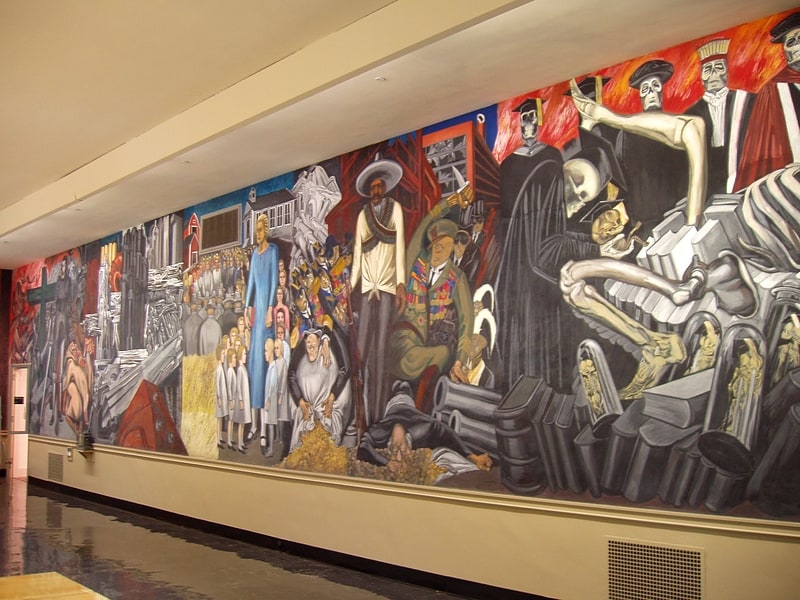
University library in Hanover, New Hampshire. The Baker-Berry Library is the main library at Dartmouth College in Hanover, New Hampshire. The fresco, The Epic of American Civilization, was painted by José Clemente Orozco in the lower level of the library, and is a National Historic Landmark. Baker's tower, designed after Independence Hall in Philadelphia, stands 200 feet above campus and is often used as an iconic representation of the college.
The original, historic library building is the Fisher Ames Baker Memorial Library; it opened in 1928 with a collection of 240,000 volumes. The building was designed by Jens Fredrick Larson, modeled after Independence Hall in Philadelphia, and funded by a gift to Dartmouth College by George Fisher Baker in memory of his uncle (Fisher Ames Baker, Dartmouth class of 1859). The facility was expanded in 1941 and 1957–1958 and received its one millionth volume in 1970.
In 1992, John Berry and the Baker family donated US $30 million for the construction of a new facility, the Berry Library designed by architect Robert Venturi, adjoining the Baker Library. The new complex, the Baker-Berry Library, opened in 2000 and was completed in 2002. The Dartmouth College libraries presently hold over 2 million volumes in their collections.[6]
Address: 6025 Baker Berry Library, 03755 Hanover (Hanover)
League of New Hampshire Craftsmen

Museum, Gift shop, Shopping, Universities and schools
Address: 13 Lebanon St, 03755-2124 Hanover (Hanover)
Great Hollow Road Stone Arch Bridge

Arch bridge in Hanover, New Hampshire. The Great Hollow Road Stone Arch Bridge is a historic stone arch bridge carrying Great Hollow Road over Mink Brook in Hanover, New Hampshire. Built by the town in 1914, it is one of two stone bridges in the town, and a finely crafted and little-altered example of stone masonry of the period. The bridge was listed on the National Register of Historic Places in 1997.[7]
The Epic of American Civilization

The Epic of American Civilization is a mural by the social realist painter José Clemente Orozco. It is located in the basement reading room of the Baker Memorial Library on the campus of Dartmouth College in Hanover, New Hampshire. The mural, painted between 1932 and 1934, consists of a series of 24 fresco panels, whose principal themes are the impact of both indigenous Native Americans and European colonists on North America, and the impact of war and rapid industrialization on the human spirit.
Orozco painted the mural during the same time his fellow muralist, Diego Rivera, was working on his murals at the Rockefeller Center in New York. But while Rivera's portrait of Lenin led to his mural being painted over, Orozco was given full political freedom to paint as he chose. His images offended a group of Dartmouth parents who called themselves the Boston Mothers. "We would be everlastingly grateful to you," the mothers wrote to college president Ernest Hopkins, "if the pictures could be destroyed." Another letter to Hopkins was more blunt: "Orozco has shouted forth in paint the Communist Manifesto!"
But Hopkins, a lifelong Republican, defended Orozco's right to paint as he chose. "There are 100% Americans who have objected to the fact that we employed a Mexican to do this work," Hopkins wrote to the mothers, "but I have never believed that art could be made either racial or national." Responding to concerns that Orozco's imagery was not "nice", Hopkins wrote, "if that be a criterion of judgment many of the great works of the medieval masters would have to be removed from the Louvre."
The mural was designated a National Historic Landmark in 2013.[8]
Thayer School of Engineering
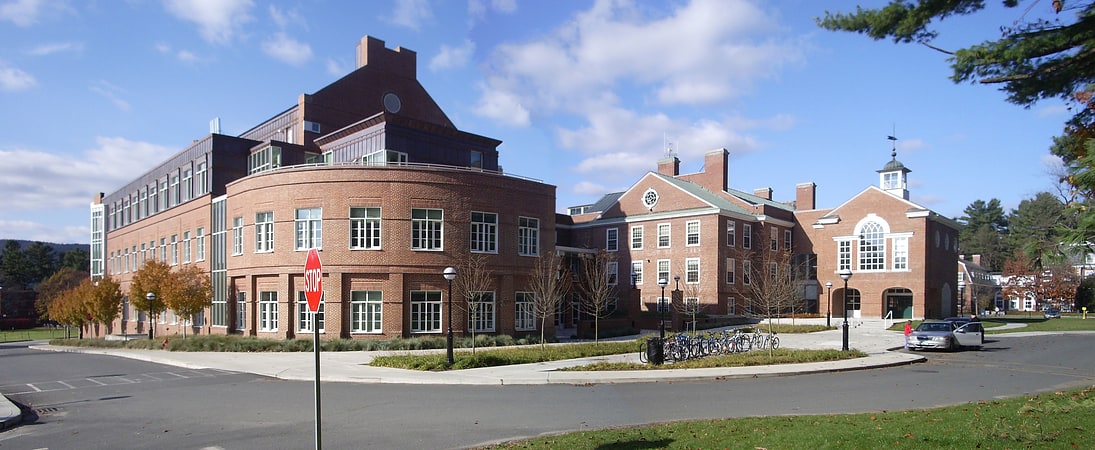
College in Hanover, New Hampshire. Thayer School of Engineering offers graduate and undergraduate education in engineering sciences at Dartmouth College, Hanover, New Hampshire, United States. The school was established in 1867 with funds from Brig. Gen. Sylvanus Thayer, known for his work in establishing an engineering curriculum at the United States Military Academy at West Point, New York. Located in a two-building complex along the Connecticut River on the Dartmouth campus, the Thayer School today offers undergraduate, master's, and doctoral degrees, as well as dual-degree programs with institutions throughout the US. Over 500 students are currently enrolled at Thayer, overseen by a faculty of 56 and preceded by over 4,500 living alumni of the school. In 2016 Thayer became the first US national research university with a graduating class of engineering undergraduates that was over 50% female.[9]
Address: 14 Engineering Dr, Hanover (Hanover)
Hanover Town Library
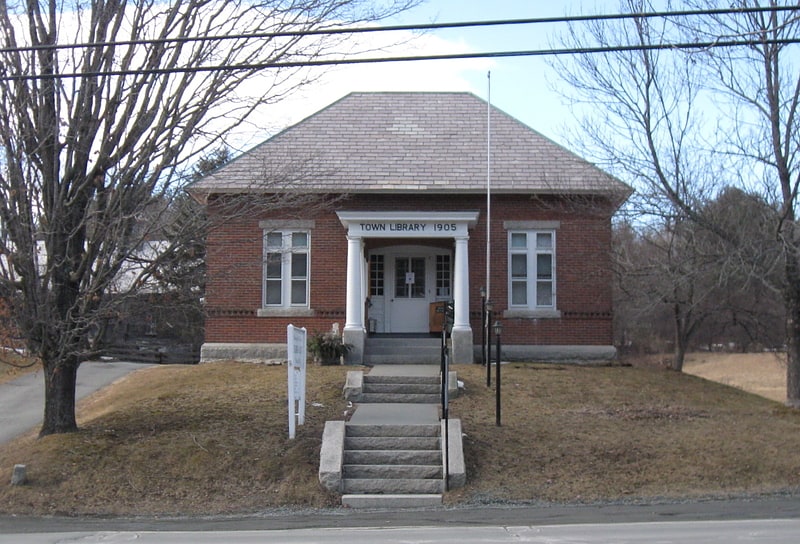
Library branch. The Hanover Town Library, also known as the Etna Library, is a historic branch library located at 130 Etna Road in Hanover, New Hampshire, United States. It serves the Etna section of the town; the Classical Revival building it occupies was the first purpose-built library building in the town, and is listed on the National Register of Historic Places. It is a modest brick building, designed by Dartmouth College professor Robert E. Fletcher and built in 1905.[10]